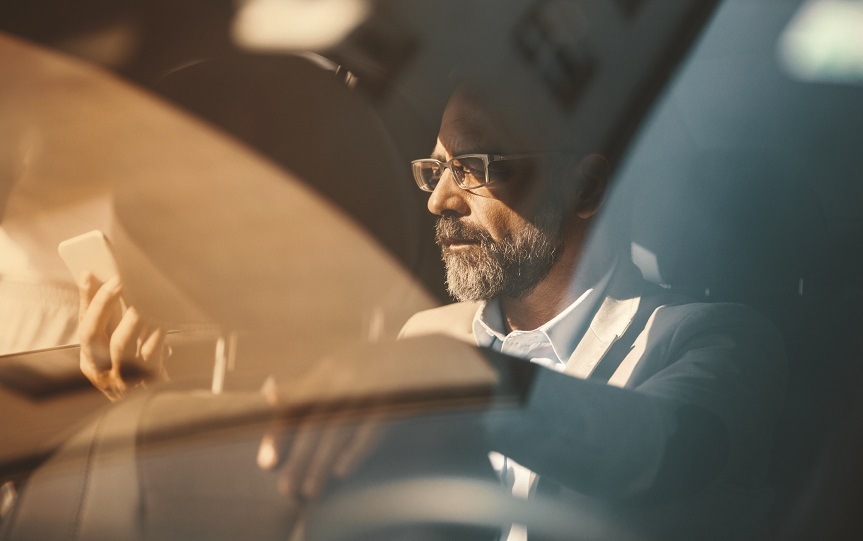Can smartphones deliver better driver behaviour? Dominic Saunders of Brightmile tells us how smartphones can actually help drivers stay safe.
If your employees drive for work, you know that keeping them safe on the road can be challenging. Increasing pressure to meet deadlines, driver distraction, and rising substance abuse use and stress levels are not helping. The pandemic’s emptier roads have even been tempting more drivers to speed.
Persuading people to be safe is tricky, especially with a task performed daily that often doesn’t feel risky. So, how can companies encourage their workforce to change their behaviour? The answer may surprise you—leveraging the power of the smartphone to gamify and reward safer driving.
Smartphones—The Most Powerful Delivery Method Ever Invented
But, you ask, smartphones cause driver distraction, don’t they? Yes, they do, but ironically, the very tool that has created additional risk provides an unparalleled platform for addressing the problem. Not only does just about everyone have a smartphone with them at all times (about 3.5 billion worldwide in 2020), we are estimated to tap, swipe, and click a staggering 2,617 times per day!
Indeed, we now live in a world in which almost every aspect of our lives can be managed via our smartphone. And that extends to personal development –it’s hard to think of a habit we want to develop or change for which there isn’t a widely-used smartphone app. Think personal fitness (Strava, FitBit), meditation (Calm, HeadSpace), and even personal finance (Monzo, Nutmeg).
So, it stands to reason that if we want to sustainably improve an employee’s driving behaviour, we need to find a way to engage them via their smartphone. And the good news is that today’s smartphones, with their built-in sensors and incredible processing power, can be used for data capture as well as driver engagement, eliminating the capex demands of installing and maintaining hardware into vehicles and enabling delivery of an end-to-end SaaS solution.
Gamification—Tapping into a Range of Motivations
Gamification involves identifying and leveraging the mechanics that encourage engagement, motivation and loyalty. Often, users are tasked with reaching a clearly stated goal to earn rewards, which can be intrinsic or extrinsic. Intrinsic means that a user plays the game because it’s innately satisfying and rewarding, whereas extrinsic motives reflect a desire for an external reward (like cash) or to avoid punishment.
When done well, gamification can be an incredibly powerful tool. We humans love to play, compete, and be entertained (remember the global Pokémon craze in the summer of 2016?).
Many companies effectively use gamification, particularly the health and fitness industry. For instance, Strava’s fitness tracking app enables its users to track, record, and compare their fitness achievements with friends and their network, which helps change habits and improve health. This collaborative positive feedback helps Strava add about 1 million new users every 40 days.
There is no reason why the same concepts cannot be applied to driver safety, and apps are already allowing company drivers to track their performance and compete with their colleagues, as well as rewarding them with points and prizes for good driving.

Rewards—And a Positive Culture around Safety
Gamification enables the ‘carrot’ in addition to the ‘stick’ in a company driver safety programme. Employees may be completely unaware or deny that they’re being unsafe on the road. Warnings and penalisation certainly communicate the consequences after the fact, but they usually don’t help incentivize the desired behaviour while it’s actually taking place. They can also foster a negative working culture and difficult discussions – it’s safe to say that every company would prefer to avoid the need to discipline an employee in the first place.
Incentivising safe driving and creating a positive culture around driver safety can help break bad habits and reprogram better ones in real-time, all without any management intervention.
Naturally, rewards are crucial to this—everyone loves to receive praise and prizes But, the types of rewards must be ones that its earners actually want. Often, the old adage “cash is king” proves true. But it’s wise to offer a broader array of rewards (such as achievement badges, bragging rights vs. colleagues, charitable donations) in order to unlock the full spectrum of extrinsic and intrinsic motivators, especially where the safety programme needs to address a wide range of driver profiles.
Putting It All Together
Deploying a safe driving app is unlikely to change bad habits and dangerous behaviour on its own. It must be complemented with a holistic safe driving programme that makes sense for your organisation. But, when the key to achieving desired results is to change the behaviour of the driver, it seems likely that smartphone apps will have an increasingly prominent part to play in driver safety.



